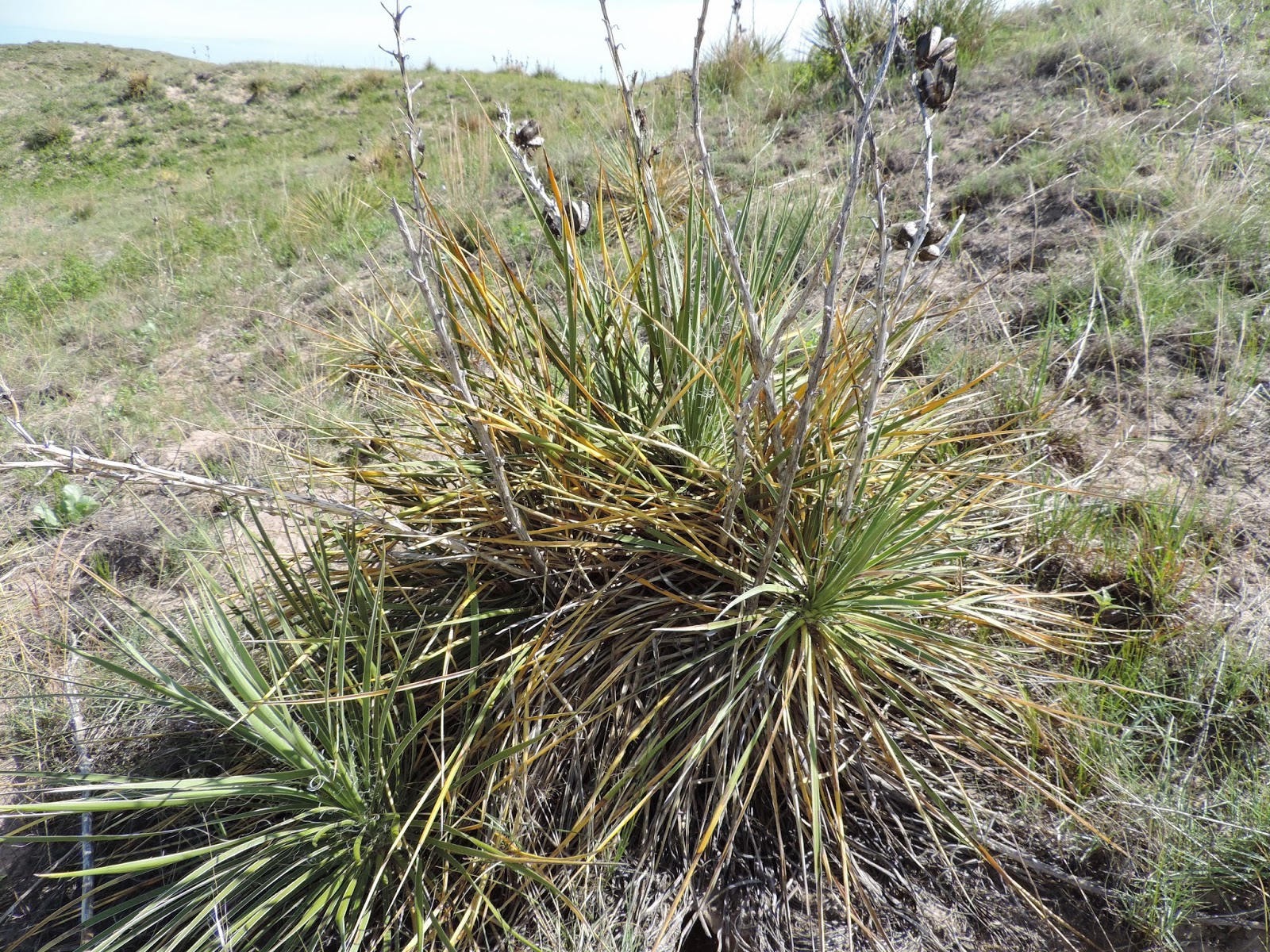That's right--yucca is the bison of the prairie plant world!
Yucca is pretty cool, too--it has a unique pollinator relationship with a moth. The Sandhills species of yucca is Yucca glauca, which is also fun to say--try it 3-4 times fast.
 |
| Most of the Yucca glauca in the Nebraska Sandhills has turned yellow this summer. Very few are flowering. Last year's flower stalks are seen in this photo. Photo by Larkin Powell |
This summer, most of the yucca in the entire Sandhills region has turned a pale yellow. UNL range ecologists first noticed this and have been pondering the event since May. My colleagues informed me that a UNL plant pathologist is currently working to determine the cause, but it is believed a pathogen such as a bacteria may be responsible.
Yup--plants can get sick, too.
Plants may have gotten stressed in the 2012 drought and the severe 2013 winter. No one yet knows if the yucca will recover, or if this will be fatal to many plants. We do know that it is widespread--it is actually amazingly widespread. On a recent trip to view my research projects, my colleague and I saw sickly yucca from Burwell to Ainsworth to Valentine to Thedford, and I recently saw similarly yellow yucca near Ogallala, Nebraska. My photo here is from a ranch southwest of Valentine.
In our entire trip, we only viewed 5-6 flowering stalks as well. Although each yucca plant does not flower every year, you would expect to see more flower stalks that we viewed--evidently the plant is saving resources to fight the pathogen.
What will this mean for the relationship with the plant's pollinators? If yucca disappears from chunks of Sandhills grassland, how will this affect the ecosystem? We'll save predictions until we know more about the fate of the plants, but it is clear something odd is happening to the yucca of the Sandhills this year.
And, it is another reminder that nothing ever stays the same.
No comments:
Post a Comment